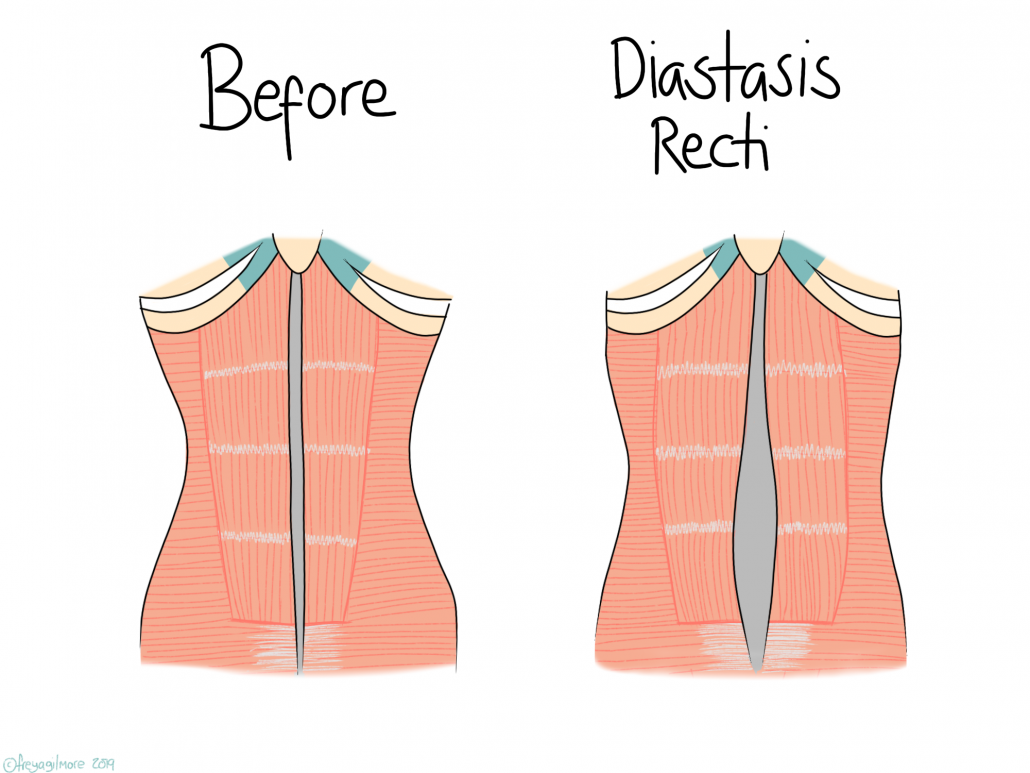Diastasis Recti is the separation of the abdominal muscles in pregnancy or obesity. The body needs these muscles to separate in pregnancy, but often their failure to come back together goes unnoticed.

It is important to recognise that this is not the same as a muscle tear, and is not considered traumatic. The separation is actually due to the thinning and stretching of a line of connective tissue that runs down the front of the abdomen. As the body heals post-partum, this connective tissue should also begin to return to its original size. As it is not contractile tissue (like a muscle) this often happens slowly, or not at all.
Effects of Diastasis
Research is inconclusive about links with back pain and diastasis. There are papers that debunk the idea that a “weak core” leads to lower back pain. There are stronger links between diastasis and pelvic organ prolapse or urinary incontinence.
More major cases of diastasis lead to “coning” around the affected area when the abdomen is under increased pressure. In cases like this, diagnosis may be possible without feeling the abdomen at all, although this is still useful.
Diagnosing Diastasis
Diastasis Recti is diagnosed by putting the abdomen under pressure and feeling for a dip along the centre of the abdomen. Your osteopath can do this for you, or you can try at home. We do not recommend that you try this before 6 weeks post partum. This is your recovery period, and a positive result from the test would not be unexpected.
- Laying on your back with your knees bent, place your finger tips lightly on the centre of your abdomen
- Raise your head enough to feel the abdominal muscles contract
- While the muscles are engaged, feel gently into the midline for areas of softness.
The length and width of these areas are important to note, but the depth is too. A positive test is considered to be a gap with a width of two finger tips, but your osteopath will take this into account along with other findings.
Management
Your osteopath can develop an exercise plan with you. We do not recommend exercises that produce high pressure within the abdomen, such as sit ups or crunches. It is worth noting that it is not just one layer of muscles that need to be rehabilitated, so multiple movements are required. Alongside basic flexion, your plan will involve rotation and side-bending movements to cover the entire abdominal wall.
Beyond treating the diastasis itself, we can help with other postnatal ailments. Residual lower back pain from pregnancy may last longer in women who are lactating as their hormones do not return to pre-pregnancy levels until they stop lactating. Carrying or feeding baby can also take their toll on the muscles and joints of the back and shoulders. These are not things you need to suffer through.
If you have symptoms of diastasis or other post-natal aches and pains, book an appointment online now.
